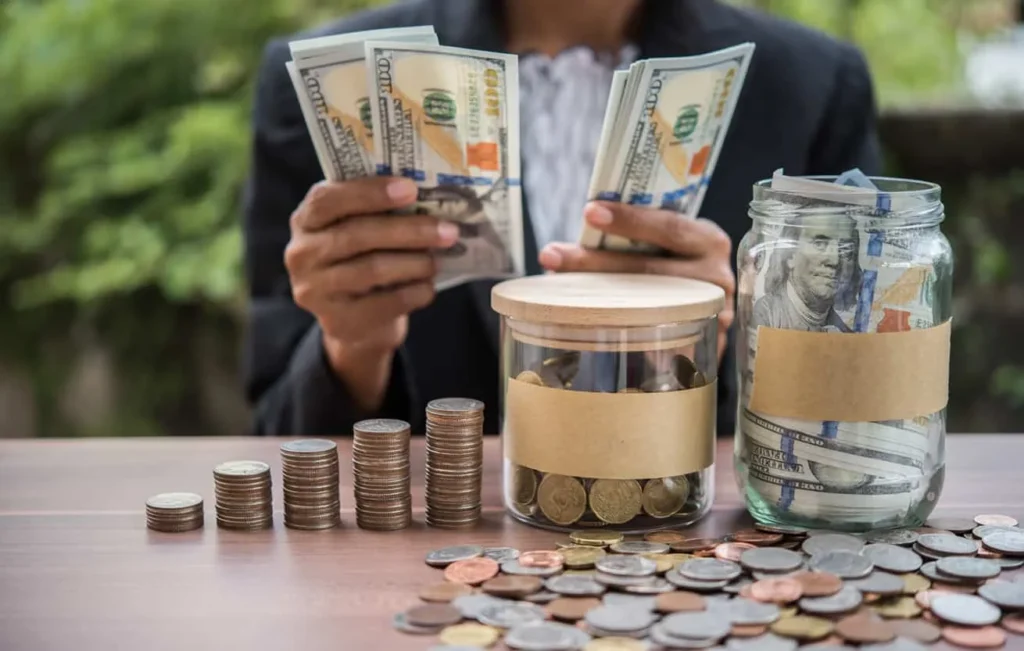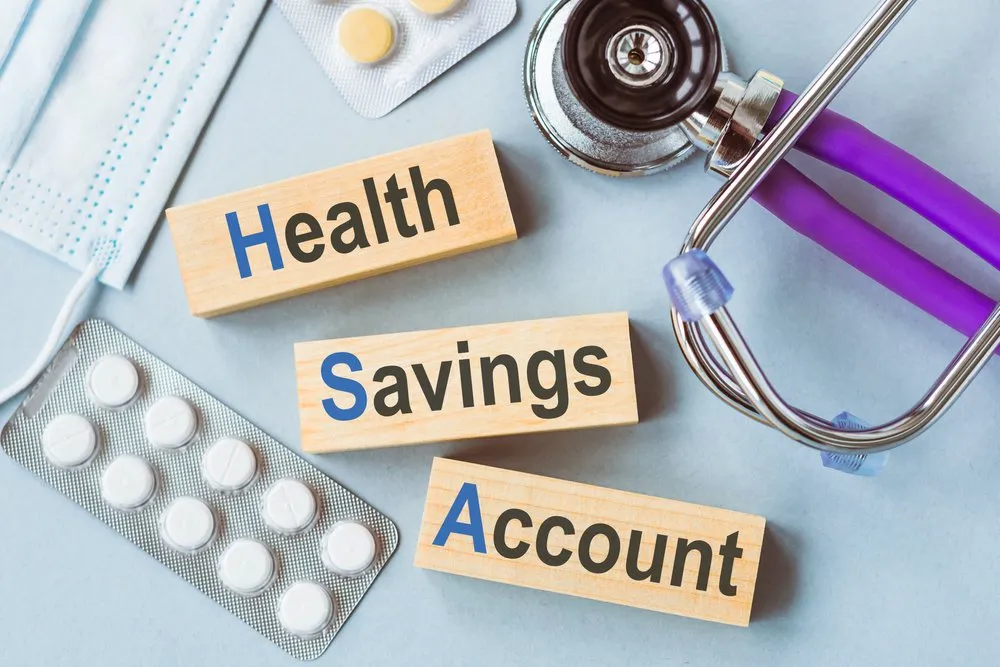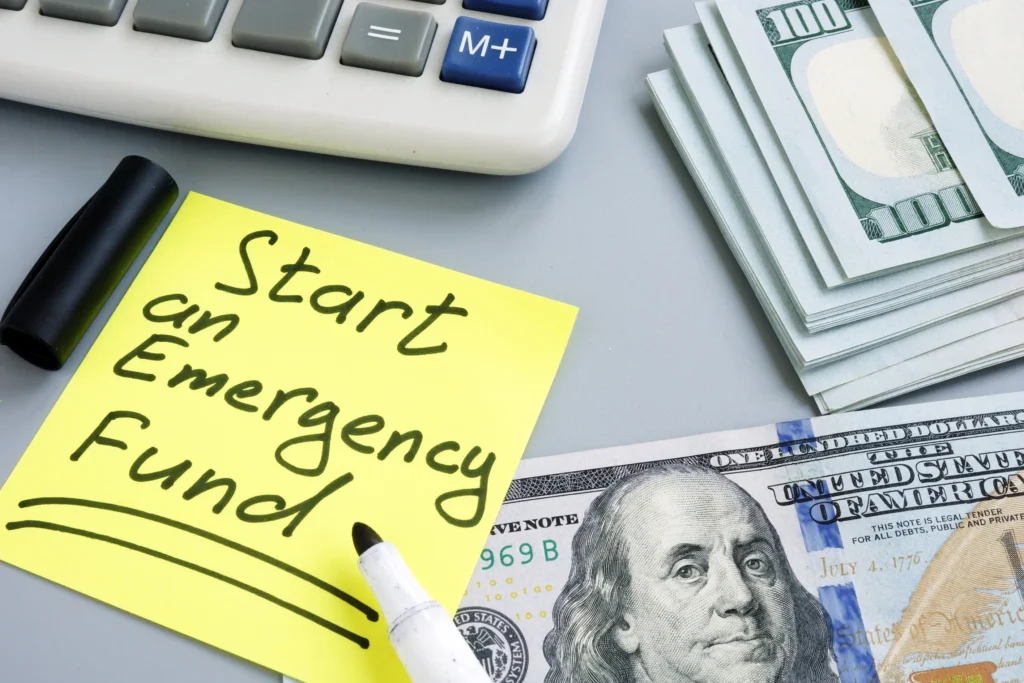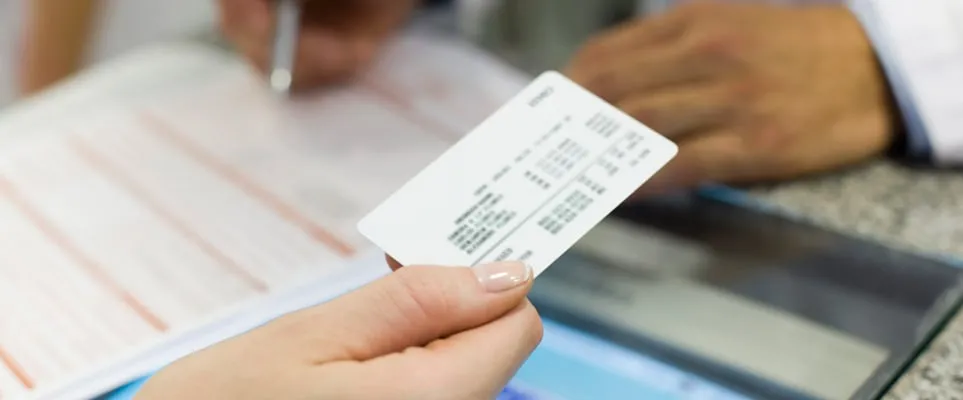Having an emergency fund is an important aspect of personal finance due to life uncertainties. Medical bills, an unexpected car repair, or a job loss are some of the problems that could hit you at any point in time, and being financially prepared makes all the difference.

To be ahead of these problems, you need our emergency fund savings tips to help you build a solid financial safety net to catch you whenever life throws something your way.
However, you can’t just start saving; you need to understand the rules and how much to start saving, so you don’t have a hard time doing this.
How Much Should I Save for an Emergency Fund?
Asking “How much do I need to save?” isn’t a bad question, it only shows you are dedicated to saving your life and finances much later.
The truth remains, that the amount depends on various factors especially your income and the bills at hand, but a good rule of thumb is to save at least three to six months of living expenses.
That means adding up how much you spend on the basics like rent or mortgage, utilities, groceries, transportation, and insurance.
Once you know that number in terms of how much you are spending each month, take that number and multiply it by three to six months to find your emergency fund goal.
For example, if your monthly expenses run up to $2,000, you must have at least $6,000 to $12,000 in your emergency fund.
Other financial gurus say it is even better to build an emergency fund equivalent to at least a year’s worth of living, especially if you are involved in a field where job instability could be somewhat unpredictable or when a person has great financial obligations such as mortgage payment and medical care.
This, of course, depends on job security, whether or not a person has a family, and how many debts they may have incurred.
All said and done, however, one should begin an emergency fund today if the savings will only be small monthly. The sooner you start saving, the more secure you will feel when those unpredictable expenses arise.
7 Essential Emergency Fund Savings Tips

Here are seven down-to-earth tips that will make it effortless for you to grow and maintain your emergency fund:
1. Set a Realistic Savings Goal
Define an achievable goal based on the essential monthly needs before commencing to save. Divide the big goal into smaller and simpler stages.
You can start with saving one month’s worth of expenses, then work your way up to three months, and eventually aim for six months or more. Setting small and achievable goals will help you remain focused and not feel overwhelmed with the savings process.
2. Automate Your Savings
Arguably, one of the easiest and most effective ways to save for an emergency fund is to make the process automated. Set up automatic transfers from your checking account into a savings account earmarked for this purpose.
Automatically taking the money out for savings takes away all temptation to use it elsewhere, unless necessary. You can start small, with as little as $50 or $100 a month. Over time, these meager contributions will add up.
3. Open a Separate Savings Account
Having your emergency fund in some other account than the one you use to check or save will help you avoid using those funds unintentionally. You could look into opening a high-yield savings account, which allows your emergency fund to grow interest over time.
A separate account also helps psychologically differentiate money set aside for emergencies from all other money and reduces the temptation to use it for anything less than an emergency.
4. Trim Off Non-Essential Expenses
The speedier you want to build up your emergency fund, the more you will have to cut back on non-essential expenses. This can be anything from trying to eat out less often to cancel subscriptions that are never used to finding cheaper ways of entertaining yourself.
Every dollar saved from this type of expense is money that could go into the emergency money pit. These small sacrifices today can lead to a much more financially secure tomorrow.
5. Save all Unused funds to Your Emergency Fund
Set aside a portion or all of any unexpected income—a work bonus, for example, or a tax refund or monetary gift—to your emergency fund. It’s tempting of course to spend this “extra” money, but using it instead to give your emergency fund a boost may help you achieve your financial goals more quickly.
6. Reassess and Adjust Your Savings Regularly
Your financial situation can change over time, so reassess your emergency fund savings from time to time. For example, if your monthly expenses go up because your rent increases or you take on new bills, you will have to increase your savings goal.
Periodical check-in with the plan for your savings will help you keep your emergency fund adequate to your changing needs.
7. Stay Disciplined and Patient
Building up an emergency fund requires time and discipline, especially if you start building one from scratch.
You have to be patient and stay focused on your savings goal even when the progress seems to be at a snail’s pace.
Over time, a healthy emergency fund that gives peace of mind will be built through consistent contributions, no matter how small.
Emergency Funds That Should Be Prioritized

Not all emergencies are created equal, and some should take priority over others when it comes to dipping into your emergency fund. Consider these four emergency needs that should top the list when using your savings:
1. Health-related Bills
Accidental medical bills, prescription costs, and urgent care are very expensive; having an emergency fund protects you by enabling you to pay for the treatment that you need.
Medical care is often not something one can negotiate; hence, this forms one of the most critical uses for your emergency savings.
2. Job Loss
It keeps you going in case you lose your job to bridge those everyday expenses when looking for another source of income. Your emergency fund can help you continue paying rent, utilities, groceries, and other essentials during that transition period.
Since most unemployment situations go into months or even longer when the emergency fund is well stocked, the stress of losing a job is cushioned from impact.
3. Home or Car Repairs
You never know when those unexpected home or car repairs will wipe out your bank account.
Most times, such expenses are quite indispensable to your quality of life, either because you take your vehicle to work and it needs immediate fixing, or there is some structural damage in your house that needs repair.
Tap into your emergency fund to accomplish this, and you’ll have the problem fixed in no time without having to necessarily borrow money or build up credit card debt.
4. Essential Living Expenses
Sometimes, the emergencies are in the form of vital living expenses that skyrocket or must be paid off urgently, such as increased rent, suddenly hiked utilities, or unexpected childcare costs.
Your emergency fund can help you cover these expenses while keeping you away from financial strain and continuing to uphold your standard of living until things get back to normal.
Final Words
It is now clear that an emergency fund is important for long-term financial stability and security.
Setting a clearly defined savings goal, automating your savings, shaving off non-essential expenses, and prioritizing critical needs can assure you that your emergency fund is strong enough to face an unfavorable event or condition.
Whether you are just starting to work on building your savings or want to make your current financial situation even stronger, here are some emergency fund savings tips that will help you always cope with whatever life throws at you.
After all, true financial emergencies aren’t an ‘if’ but a ‘when’, and having the right set of savings strategies can help you steer through those storms confidently.







